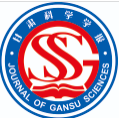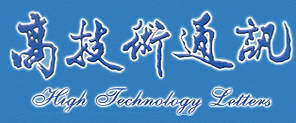
Science Bulletin
About Science Bulletin Science Bulletin (Sci. Bull.) is a multidisciplinary academic journal supervised by the Chinese Academy of Sciences (CAS) and co-sponsored by the CAS and the National Natural Science Foundation of China (NSFC). Sci. Bull. is a semi-monthly international journal publishing high-caliber peer-reviewed research in a broad range of natural sciences and high-tech fields on the basis of its originality, scientific significance and whether it is of general interest. In addition, we are committed to serving the scientific community with immediate, authoritative news and valuable insights into upcoming trends around the globe. Sci. Bull. is indexed by Science Citation Index, Chemical Abstracts, Ei Compendex, Scopus, Google Scholar, Inspec, Academic Search Alumni Edition, Academic Search Complete, Academic Search Elite, Academic Search Premier, ASFA 1: Biological Sciences and Living Resources, ASFA 2: Ocean Technology, Policy and Non-Living Resources, Biological Sciences, Biological Abstracts, BIOSIS Previews, CAB Abstracts, Current Contents/Physical, Chemical and Earth Sciences, Current Mathematical Publications, Digital Mathematics Registry, EMBio, Environmental Engineering Abstracts, Environmental Sciences and Pollution Management, Mathematical Reviews, MathSciNet, Meteorological and Geoastrophysical Abstracts, Pollution Abstracts, Water Resources Abstracts, Zentralblatt MATH, and Zoological Record. Criteria for publication The criteria for publication in Sci. Bull. include: Originality and creativity of the research Scientific significance Interest to a broad interdisciplinary readership Types of papers Articles: Originally report substantial advances regarding an important scientific problem. Articles normally include a 250-word abstract, 4–6 keywords, up to 6 figures or tables and 60 references. Other supporting information should usually be included in Supplementary materials that will only be published online. Articles are suggested to be limited to 10 print pages, including references, captions and notes. Reviews: Summarize the recent progress in certain core scientific disciplines, comment on the research status, and highlight future directions. The author(s) should focus on one topical aspect rather than provide a comprehensive literature survey. Review papers should closely relate to, but not only focus on the author’s own research work. Reviews are usually solicited by the editors, but unsolicited submissions may also be considered. Reviews are suggested to be limited to 15 pages including up to 100 references, a 250-word abstract, 4–6 keywords and a maximum of 10 displayed items. Short Communications: Provide rapid and concise report of a novel finding that is brief in nature but is of general interest to a broad readership. Short Communications are expected to be less than 2000 words with 1–2 displayed items and less than 15 references. Abstract and keywords are not needed. Thus, the beginning paragraphs should present concise yet sufficient background information that would allow the readers to appreciate the rationale of the work, and put the study in a proper perspective. Any other supporting information (if necessary) should be submitted as Supplementary materials. Perspectives: Provide fresh insights into new advances in a specific research field of science and technology, or scientific policy and other issues related to the scientific community. Authors should not primarily discuss their own work. While being a snapshot of an issue or a problem, perspectives are expected to propose a solution in detail. Perspectives should be less than 3000 words with a maximum of 15 references and 1–2 displayed items. Research Highlights: Highlight and explain potential scientific significance of a most recent piece of exciting research. Research Highlights should be limited to 2000 words with 1 displayed item and 15 references. News & Views: Introduce or comment on recent scientific advances or issues that have major influence on science or the scientific community. News & Views are generally solicited and expected to have no more than 2000 words with 1 displayed item and 15 references. Commentaries: Comment on a recent scientific publication, a general scientific issue, or a policy of broad interest. While being a snapshot of an issue or a problem, commentaries are expected to propose a solution in detail. Commentaries are usually limited to 1 page (~1000 words) with less than 10 references. Correspondences: Remark on a recent publication in Sci. Bull. or a brief introduction of a recent research advance. Correspondences are generally within 1 page (~1000 words) with less than 10 references. Please ensure that you select the appropriate article type from the list of options when making your submission. Manuscript submission Manuscripts should be submitted online at https://mc03.manuscriptcentral.com/csb. If you have problems with the online submission, please contact Sci. Bull. Editorial Office by e-mail at csb@scichina.org or by phone at 86-10-64036120. Please make sure you have prepared all the required manuscript information listed as follows before starting submission. If you are submitting a revised manuscript, please enclose a “Responses to the reviewers” to answer the reviewers’ and the editors’ comments, together with the revised manuscript with all the changes highlighted. Review policy and procedures Sci. Bull. adopts a rigorous peer-review procedure and publishes about 10% of the papers submitted each year. All submissions (including invited papers, which comprise approximately 10% of all published manuscripts) are initially evaluated carefully by the scientific editors and executive editors who have a broader perspective and wider context. Manuscripts that fall outside the journal’s scope and those that are not deemed by the editors to be strong candidates for publication will be returned to the authors before peer review, typically within 3–5 working days. The manuscripts passing the initial review will be assigned to associate editors, and then sent to qualified peer reviewers. The editors will make every effort to reach decisions on these papers within 4 weeks from the submission date. Sci. Bull. invites an editorial board consisting of more than 100 top scientists throughout the world to ensure the editorial decisions made are independent, unbiased and professional. Being a multidisciplinary scientific journal, the editorial criteria can be made uniform across disciplines. Sci. Bull. does not have a guest editor policy for now. Please note that Sci. Bull. offers Fast-Track review and publication for papers that require rapid assessment. The main selection criterion for a Fast-Track paper is its scientific merit. Manuscript rejection Editorial decisions are not simply based on counting votes or rank assessments. Sci. Bull. only has space to publish a relatively small portion of submitted papers each year and the primary responsibilities of us are to our readers and the scientific community at large; therefore, many submissions will be declined, despite favorable peer-review comments sometimes. Sci. Bull. does not encourage appeal or request for additional reviews if the reviews are accurate. However, under certain circumstances, such as the reviews are unfair with solid evidence provided by the author(s), the manuscript will be reconsidered and the EIC will accept the appeal and initiate the appeal process. Please note that any appeal should be made by the corresponding author to the Editorial Office by email before resubmitting the manuscript. Please do not resubmit the revised version of a rejected manuscript without getting a response from the Editorial Office. After acceptance Proofs: One set of page proofs (as PDF files) will be sent by e-mail to the corresponding author(s). Elsevier now provides authors with PDF proofs which can be annotated; for this you will need to download Adobe Reader version 7 (or higher) available free from http://get.adobe.com/reader. Instructions on how to annotate PDF files will accompany the proofs (also given online). The exact system requirements are given at the Adobe site: http://www.adobe.com/products/reader/systemreqs. Please use this proof only for checking the typesetting, editing, completeness and correctness of the text, tables and figures. Significant changes to the article as accepted for publication will only be considered at this stage with permission from the Editor. We will do everything possible to get your article published quickly and accurately—please let us have all your corrections within 48 hours. It is important to ensure that all corrections are sent back to us in one communication: please check carefully before replying, as inclusion of any subsequent corrections cannot be guaranteed. Proofreading is solely your responsibility. Note that Elsevier may proceed with the publication of your article if no response is received. Page charges and offprints: Page charges are 500 RMB (US $80) for each page in black and white. Charge for color pages is dependent on the total page numbers. For detailed information, please visit the online version of Guide for Authors on Sci. Bull. website. The Editorial Office will send an invoice regarding the payment to the corresponding author(s) right after you receive the gallery proof. If extra offprints and sample journals are required, please return the detailed information to the Editorial Office. The full text article opens free to the readers inside China at http://www.scibull.com. For overseas readers, articles are available at https://www.sciencedirect.com/journal/science-bulletin.




评论